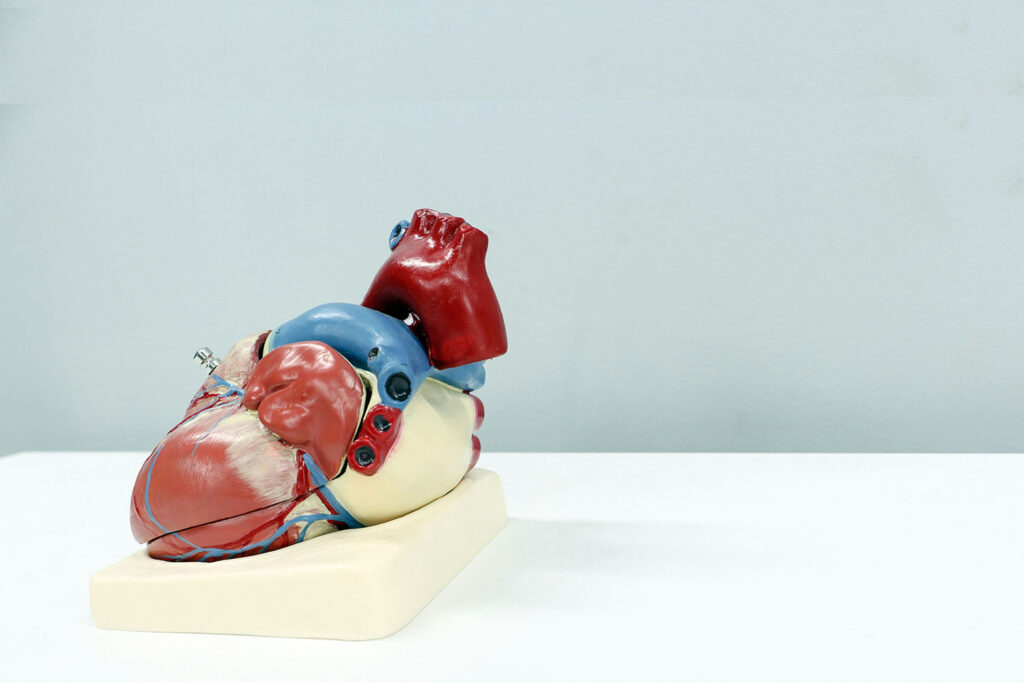How Heavy Metal Poisoning Can Cause Heart Disease

Toxic metals are known to cause significant human health problems, and one of the areas where this impact is most prominent is in the development of coronary artery disease (CAD). CAD is a condition in which the arteries that supply blood to the heart become narrowed or blocked due to the buildup of plaque, a combination of cholesterol, white blood cells, and other substances. This can lead to a decrease in blood flow to the heart, which can result in chest pain, heart attacks, and even death.
Heavy Metal Poisoning and the Connection to Coronary Artery Disease
Several toxic metals, including lead, mercury, cadmium, and arsenic, have been shown to be associated with an increased risk of CAD.[i] These metals can enter the body through various sources, such as contaminated food and water, air pollution, and occupational exposure. Once inside the body, they can accumulate in tissues and organs, including the heart, and disrupt normal physiological processes.
Lead, for example, is a well-known toxic metal that has been linked to an increased risk of CAD. Studies have shown that exposure to lead can lead to inflammation, oxidative stress, and endothelial dysfunction, all of which are key factors in the development of CAD.[ii] Mercury, cadmium, and arsenic have also been shown to have similar effects on the cardiovascular system, contributing to the progression of CAD.
In addition to directly affecting the cardiovascular system, heavy metal toxicity can also exacerbate other risk factors for CAD, such as high blood pressure, high cholesterol, and diabetes. For example, exposure to cadmium has been shown to increase blood pressure and decrease levels of “good” cholesterol, both of which are risk factors for CAD. [iii] Similarly, arsenic exposure has been linked to an increased risk of diabetes, which is a major risk factor for CAD.
Overall, the role of toxic metals in the development of CAD is complex and multifaceted. While more research is needed to fully understand the mechanisms by which these metals contribute to CAD, reducing exposure to toxic metals is an important step in preventing the development and progression of this deadly disease. This can be achieved through measures such as reducing air pollution, improving water quality, and minimizing exposure in occupational settings. By addressing the role of toxic metals in CAD, we can take a significant step towards reducing the burden of this disease on individuals and society.
How is Heavy Metal Poisoning Identified in the Body?
There are only two truly accurate ways of measuring heavy metal poisoning. One is a simple urine collection that can determine current exposure. It is sent to a lab and all the toxic metals are analyzed. The downside to this is it only measures current exposure not chronic long-term heavy metal burden deep in tissues. The second test method is to take some medicine that detoxifies these through excretion in the urine. The treatment is taken either orally, or ideally through IV, and then the urine is collected and sent to the lab. This is called a provoked challenge.
Are you worried about exposure to toxic metals? Call our office to make an appointment for testing: 303-884-7557.
[i] Houston MC. Role of mercury toxicity in hypertension, cardiovascular disease, and stroke. J Clin Hypertens (Greenwich). 2011 Aug;13(8):621-7. doi: 10.1111/j.1751-7176.2011.00489.x. Epub 2011 Jul 11. PMID: 21806773; PMCID: PMC8108748.
[ii] Scinicariello F, Abadin HG, Murray HE. Association of low-level blood lead and blood pressure in NHANES 1999-2006. Environ Res. 2011 Nov;111(8):1249-57. doi: 10.1016/j.envres.2011.08.011. Epub 2011 Sep 9. PMID: 21907978.
[iii] Xu C, Weng Z, Zhang L, Xu J, Dahal M, Basnet TB, Gu A. HDL cholesterol: A potential mediator of the association between urinary cadmium concentration and cardiovascular disease risk. Ecotoxicol Environ Saf. 2021 Jan 15;208:111433. doi: 10.1016/j.ecoenv.2020.111433. Epub 2020 Oct 15. PMID: 33068977.

